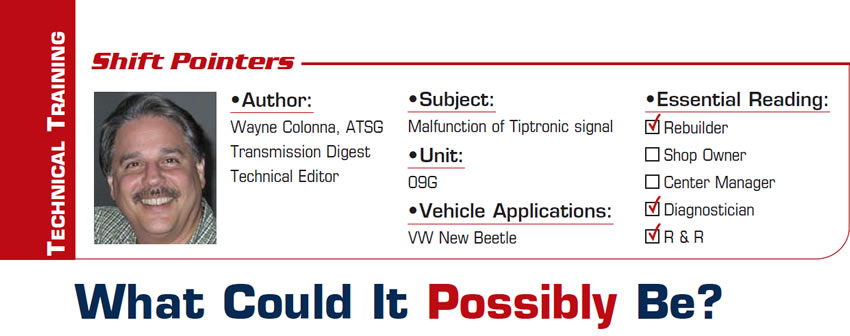Which Came First, the Chicken or the Egg?
Codes setting codes is not a new concept in the automotive industry. An example of this in the world of transmissions occurs in Dodge vehicles using the 41TE transaxle. If it develops a gear-ratio-error code such as P0731/2/3/4, code 1790 “Fault Immediately After Shift” can also be present as a result of the gear-ratio code or codes. In fact, the explanation given by the manufacturer for setting this code is: This code is set if the associated speed ratio code is stored within 1.3 seconds after a shift.
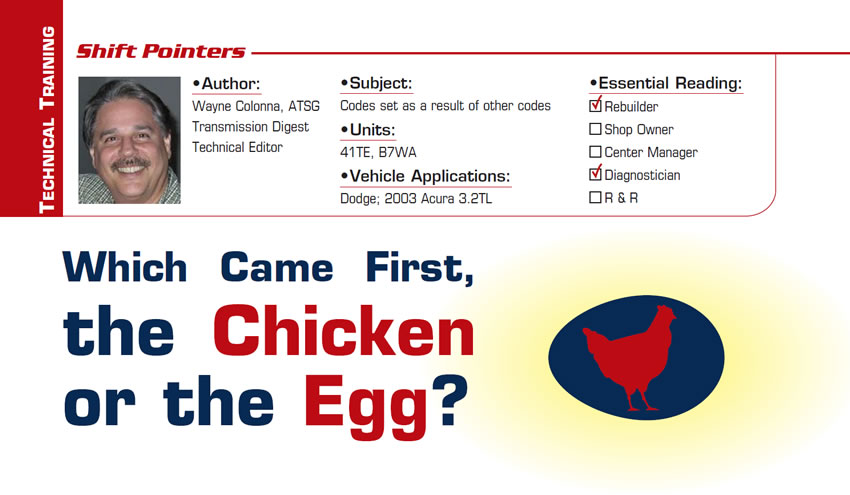
Modern Transmissions & Vehicle Security: Where is the TCU?
Engine-management computers have moved from the passenger compartment to under the hood to the top of the engine to reduce wiring (copper) and assembly costs in vehicles. Many of you may have seen manufacturers even begin to place the transmission control unit (TCU) inside the transmission (Figure 1). I am not aware who was first to use this technology, but I have seen it for many years on Mercedes-Benz vehicles.
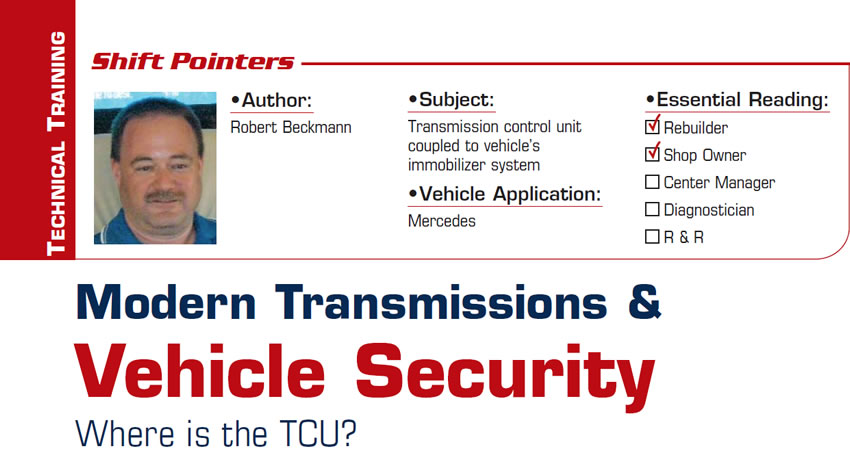
A View into the Honda Five-Speed’s Shifting
If you’ve ever tried reading the explanation given by Honda in its hydraulic charts on how the transmission shifts, then you know how it can be confusing and hard to visualize, to say the least. The intent of this article is to make it easier to understand, using capture snapshots of the actual shifts using pressure transducers. We hope this makes it easier to visualize, for as they say, “A picture is worth a thousand words.”
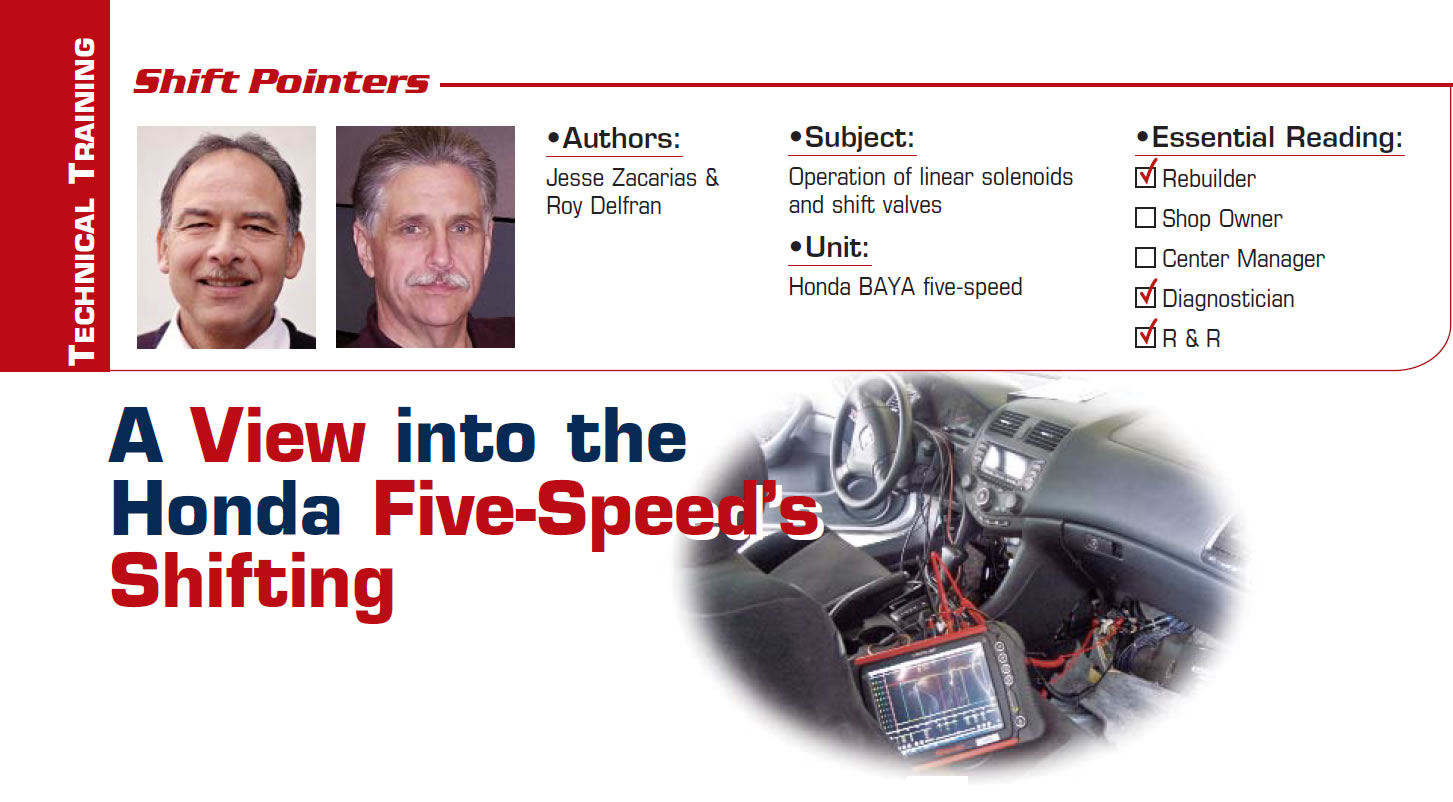
AS68RC Pressure-Switch and Performance Codes
When an Allison 1000/2000 transmission produces a pressure-switch code, it does not necessarily mean the pressure switch is faulty. A solenoid needs to stroke a valve, which then sends oil pressure to the switch to close it. If the solenoid is performing poorly, or the valve is sticking, the pressure switch will not close, causing the associated code to set.
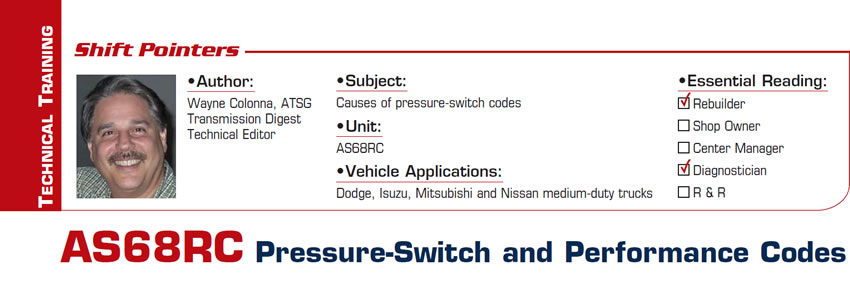
Similar but Different: A look at Ford’s 6R140W
For the 2011 model year Ford Motor Co. replaced the 5R110W in its Super Duty pickup trucks with a full-time six-speed transmission. Those of us in the aftermarket industry are calling this transmission the 6R140W. Ford likes to call it the TorqShift®6.
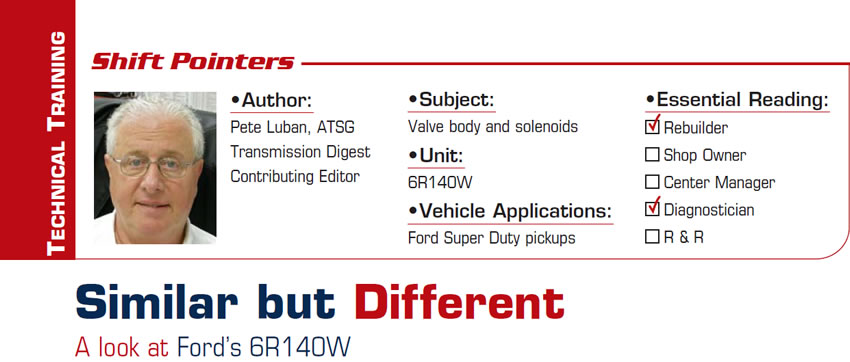
A Tale of a T-Case
The BorgWarner 44-05 and 44-06 transfer case used in Ford trucks is known to suffer from case-wear issues. Because the case halves are magnesium they tend to wear in the pocket that supports the steel shift rail (Figure 1) that holds the shift and mode forks.
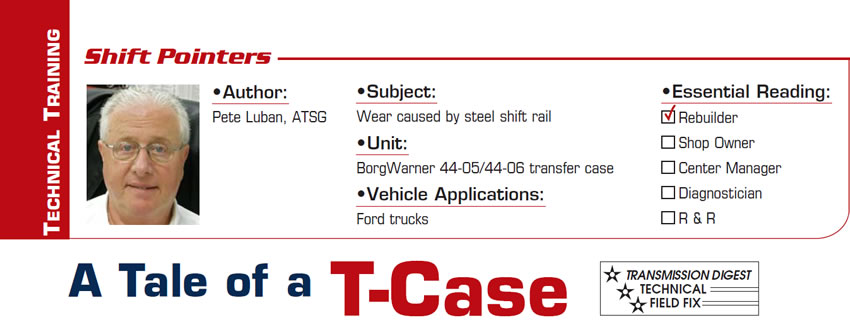
Honda/Acura Third-Clutch Mystery
As a rule, when I write about something it’s factual and definitive material with some kind of solution to the problem. This article contains none of those things; however, it does contain theories.
This is in reference to the common failure of the third clutch in Honda/Acura five-speed transaxles. When one of these vehicles comes into the shop with third gear slipping badly you can count on the fact the third-clutch plates will be totally destroyed (Figure 1), along with its immediate components such as the third-clutch return-spring retainer and the splined washer that sits on top of it (Figure 2) and the return-spring retainer shown in Figure 3.
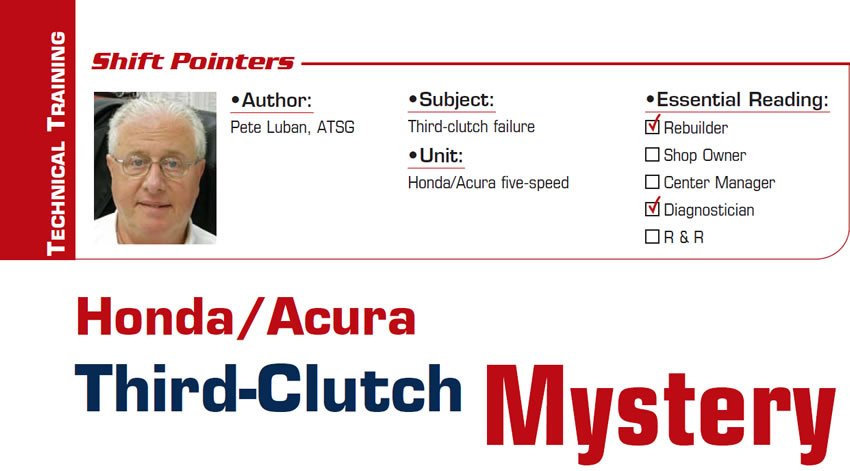
Ford’s Hybrid Transaxle – Part 2
In part 1 of this article last month we ended with the transaxle sitting on the bench awaiting disassembly, so let’s disassemble. You will notice in Figure 1 that we are ready to remove the top pan; we can’t call it a valve-body cover because there is no valve body.
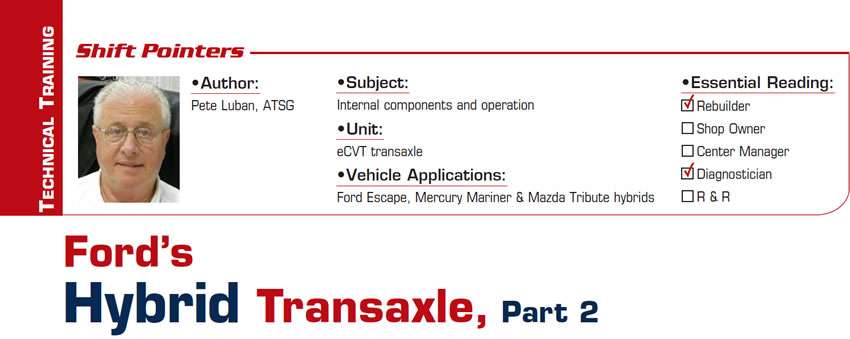
Ford’s Hybrid Transaxle, Part 1
Beginning with the 2005 model year Ford produced the Escape in a hybrid version (Figure 1) that was shared by the Mercury Mariner and Mazda Tribute, pretty much the same vehicle.
The transaxle in these vehicles is called the eCVT, and even though there are no pulleys or a drive belt its ability to change gear ratios in a stepless fashion using electric motors puts it into the CVT category. The hybrid system in these vehicles is considered a series/parallel system, which means it can take off on electric power only or it can use the internal-combustion engine (ICE).
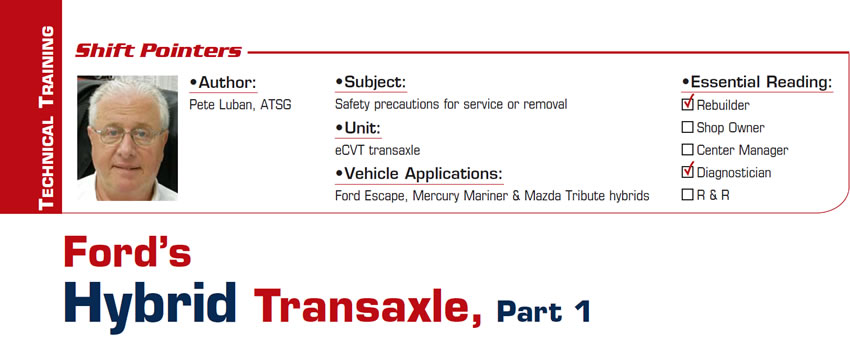
A Tale of Two Fords
Our first tale is one of those situations in which you are in the middle of nowhere and all of a sudden a warning lamp comes on. This person, whom we will call Mr. Public, was driving his Ford Taurus equipped with an AX4S on a lonely stretch of road at night when suddenly the transmission-temperature lamp came on. Fortunately, Mr. Public was able to limp the car into the closest town, where he took the car to the local transmission shop the next morning.
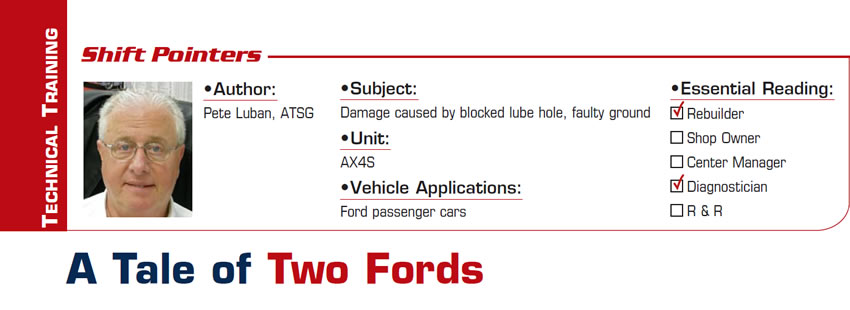
Solenoid Mix-ups
The SLT and SL1, 2 and 3 solenoids used in the U150/250 transmission (Figure 1) can easily be positioned incorrectly, causing a variety of malfunctions such as wrong-gear starts, no shifts and bind-ups, to name a few.
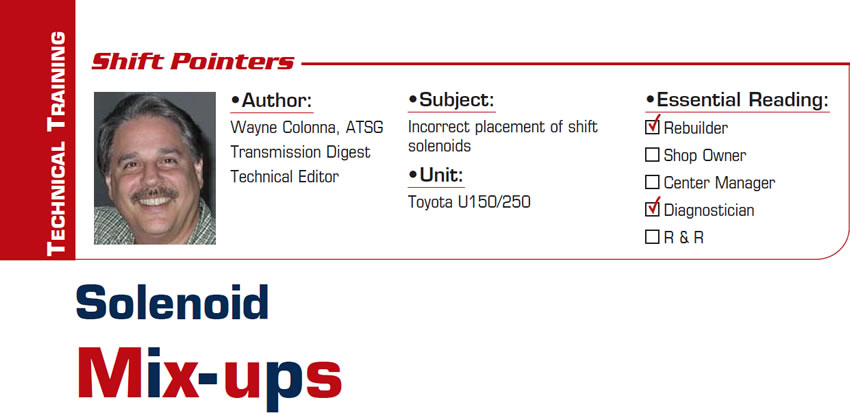
What Could It Possibly Be?
Recently, a local Lee Myles shop was dealing with a vehicle that had this 01045 code but didn’t go into failsafe right away. The symptoms it produced seemed to indicate a bad Multi-Function Switch (transmission-range sensor) on the transmission rather than the Tiptronic assembly in the console. So they brought the vehicle to our facility here in Miami.
